STEM Easter Activity
"Shrinking eggs is almost like osmosis"
Shrinking eggs is almost like osmosis.
Osmosis is when water moves from a less concentrated solution to a more concentrated solution, through a semi permeable membrane.
Water flows from one side of a membrane to the other until the concentration of the liquid on both sides is equal.
What you need:
• Two eggs
• Water
• Two glasses
• Vinegar
• Sugar
• A pin
The Experiment:
• We need to remove the shell to expose the semi permeable membrane of the egg. This can be done by placing the eggs in a cup of vinegar so they are totally covered for about 24 hours. After this time wash the egg rubbing away the remaining bits of the shell.
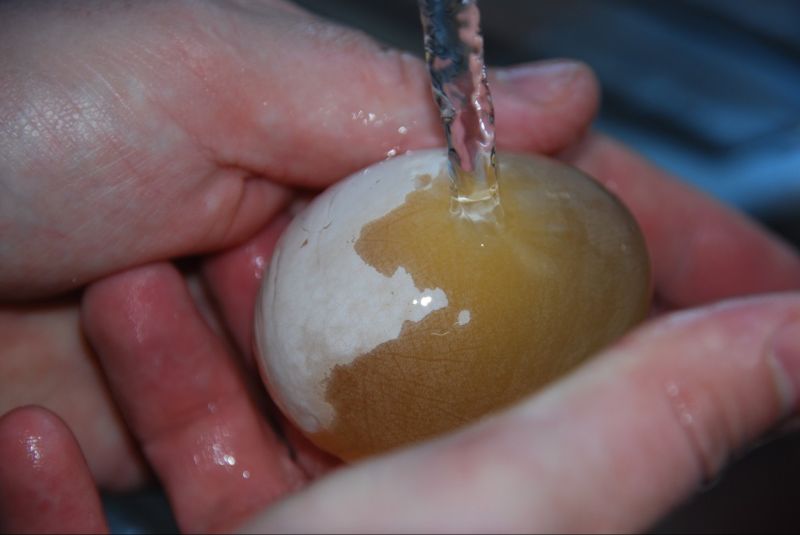
The experiment
We need to remove the shell to expose the semi permeable membrane of the egg. This can be done by placing the eggs in a cup of vinegar so they are totally covered for about 24 hours. After this time wash the egg rubbing away the remaining bits of the shell.
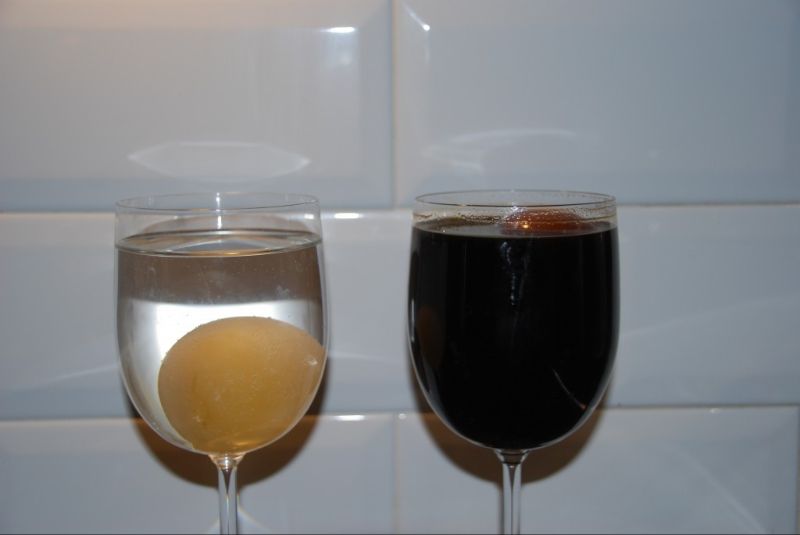
Procedure
Make up a concentrated sugar solution by dissolving sugar in water, or you could use treacle. Place one egg in a glass of water, and the other in the sugar solution or treacle. Our sugar solution looks quite dark as I used brown sugar. Note how the egg in water sinks to the bottom of the glass while the one in the sugar solution floats. This is because the sugar solution is more dense than the water.
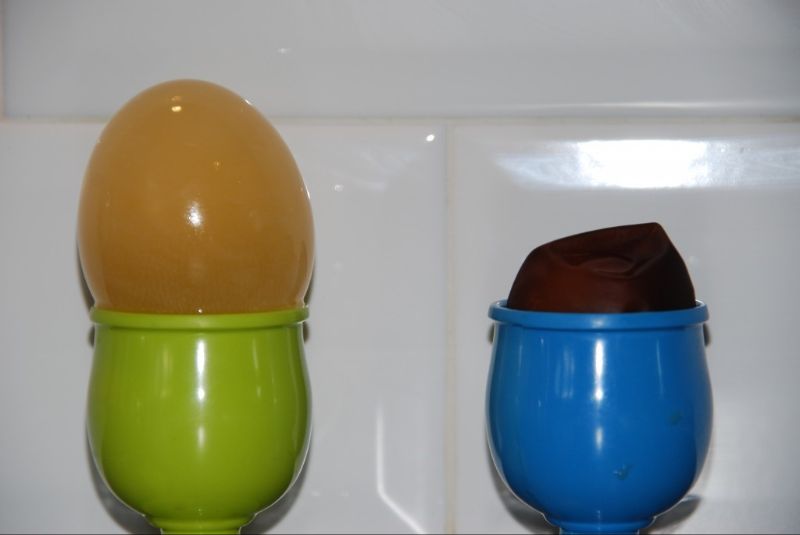
Test
Leave for another 24 hours. You can see the egg in the sugar solution looks much smaller than the one in the water.
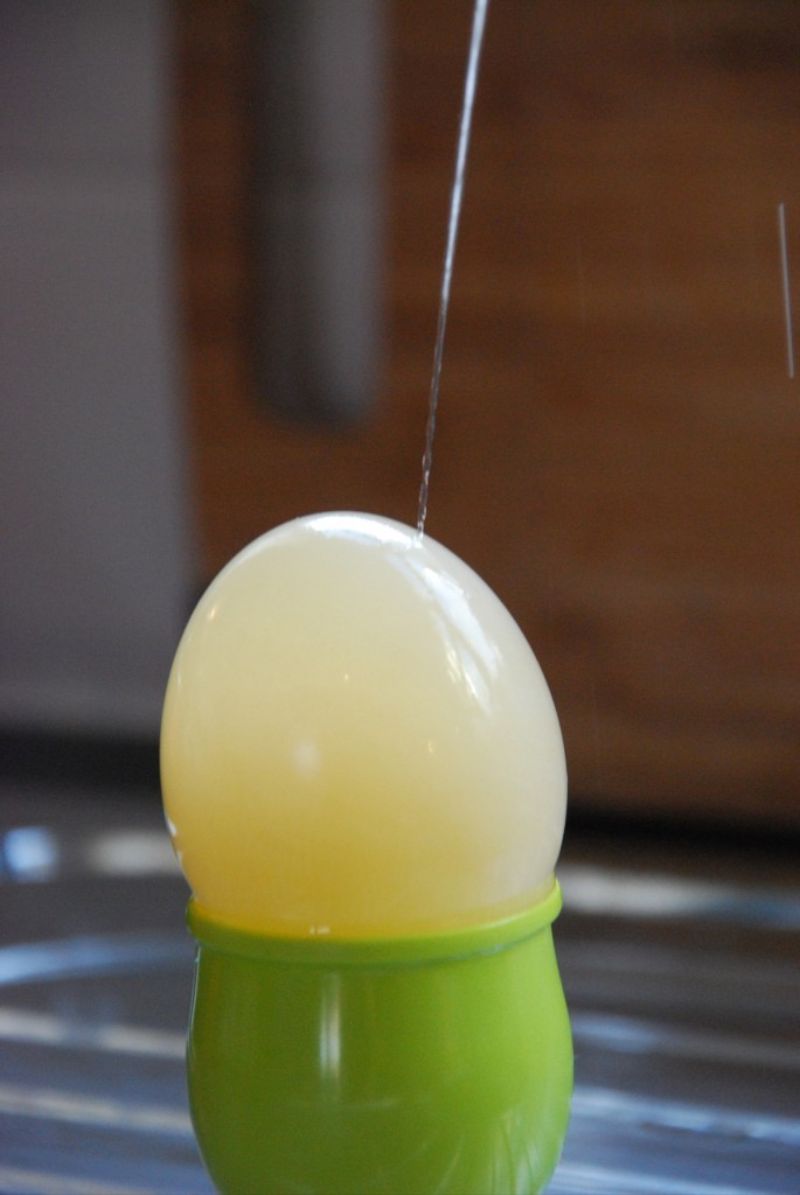
observation
Prick the egg from the water with a fine needle and watch a jet of water shoot out!
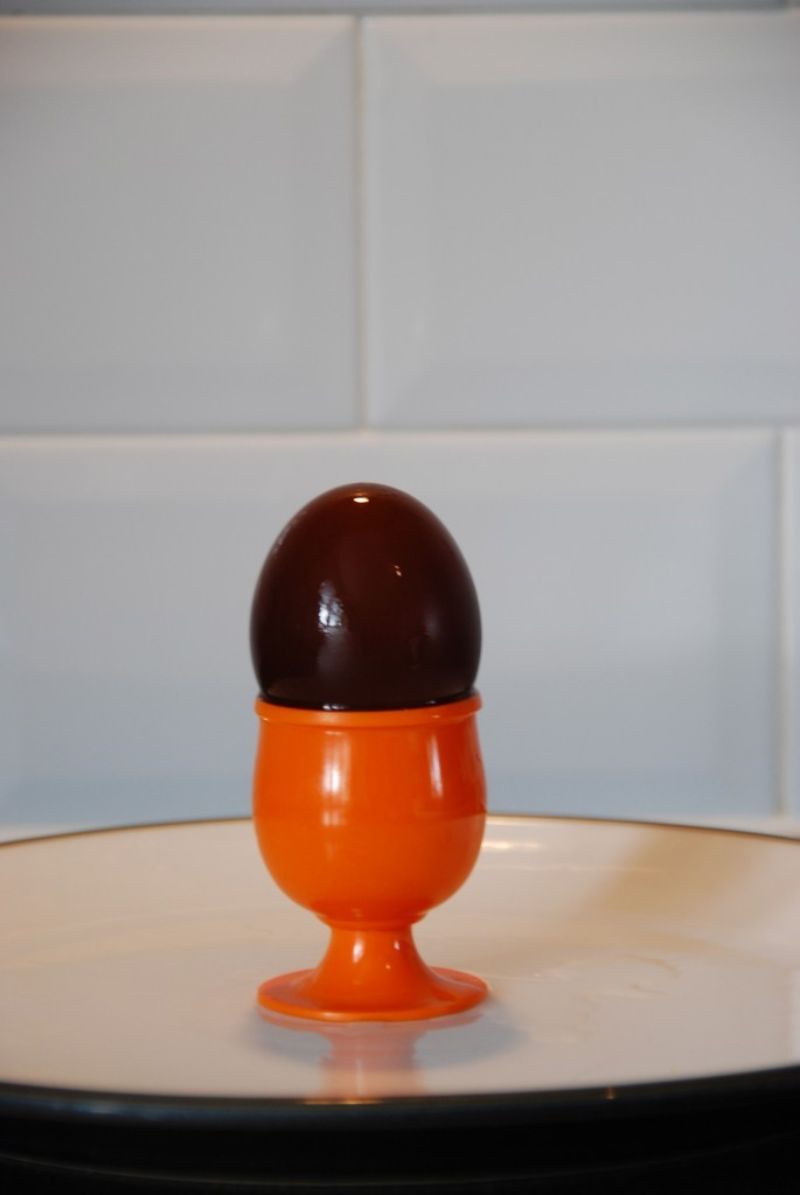
Final
Put the shrunken egg in water and watch it grow as it reabsorbs the water, this might take a few hours.

Results
The sugar solution is much more concentrated then the water, this is because it contains dissolved molecules of sugar. The dissolved molecules cannot pass through the semi permeable membrane of the egg, but the small water molecules can. The water moves from the less concentrated egg solution to the more concentrated sugar solution until the concentration is the same on both sides. Therefore, water moves from the egg to the sugar solution, and the egg shrinks.
When the shrunken egg is placed back in water, the concentration of the liquid inside the egg is higher than the water, so water moves from the water to the egg, making the egg increase in size.
When we pricked the egg that had been in the water, water shot out of the egg. This is because the egg has absorbed water, and so the inside of the egg is under more pressure than usual.
The egg shell dissolves in the vinegar as the acetic acid in the vinegar reacts with the calcium carbonate of the shell, Carbon dioxide is given off during this reaction so you should see bubbles of gas escaping.
Don’t forget to wash your hands after handling raw eggs!
How to Make a Crystal Egg Easter Craft
Materials for Making Crystals
• Pipe cleaners
• Borax
• Bamboo Skewer (or similar object)
• String
• Boiling Water
• Glass bowl or jar with large opening
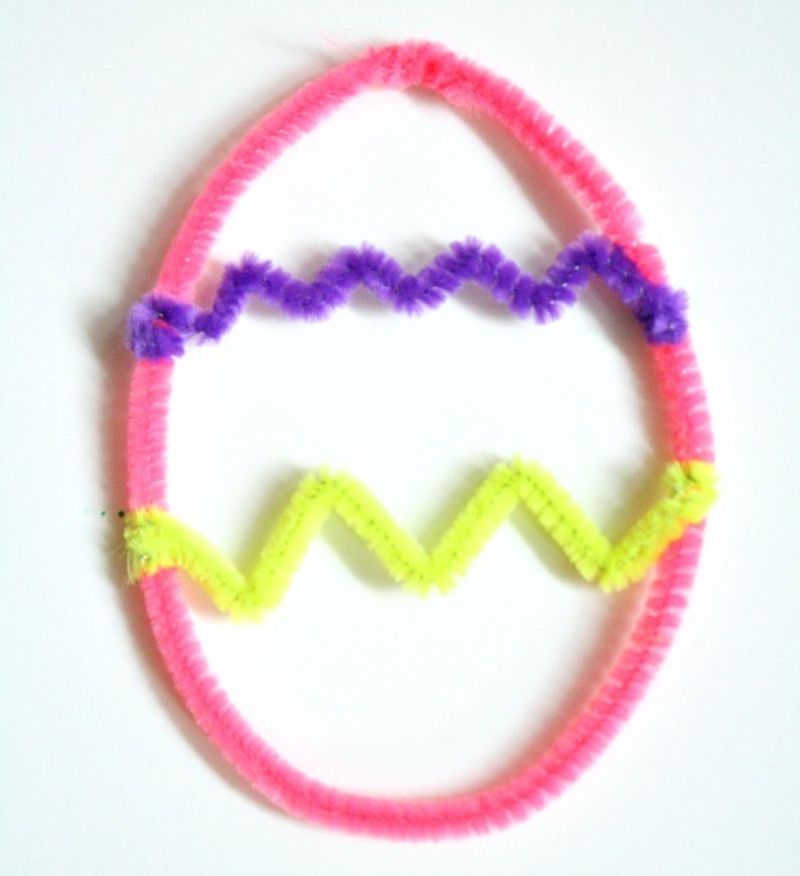
The experiment
We started making our crystals by choosing colors for our eggs. I formed the egg shape, and the kids helped bend the decorative part of the eggs.
Then we used a piece of string to tie the egg to the bamboo skewer. Measure to make sure it will hang into the container without touching the bottom.
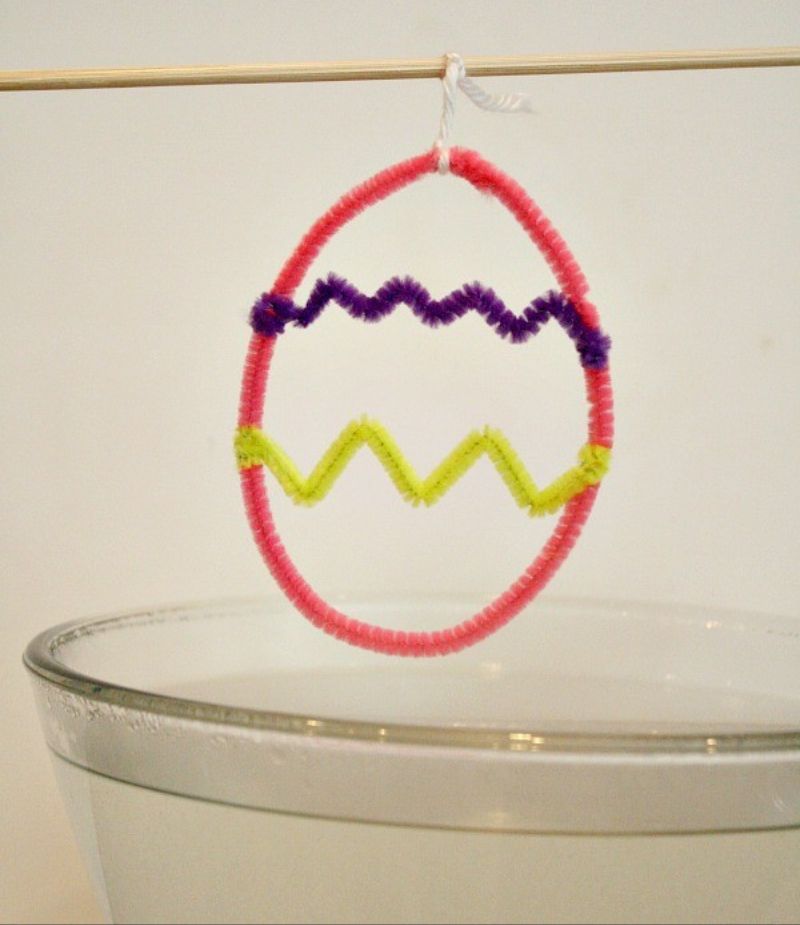
Procedure
Next, we poured enough water into our bowl to cover the eggs completely. We used about six cups of water to fill our bowl. You could also use a large jar if you have one. We didn’t have one with a wide enough mouth to fit our eggs.
Once the water is in the bowl add Borax. Use 3 Tablespoons of Borax for each cup of water. We added a little over a cup of Borax to our six cups of water. Then we stirred so some of the Borax would dissolve. Don’t worry if it isn’t completely dissolved.
Place the pipe cleaner egg into the bowl so that it isn’t touching the bottom of the container. Let the skewer rest on the sides. Make sure the egg is fully submerged in the water. (We thought ours was, but it ended up being just a bit above the water so the crystals didn’t form completely around the top.)
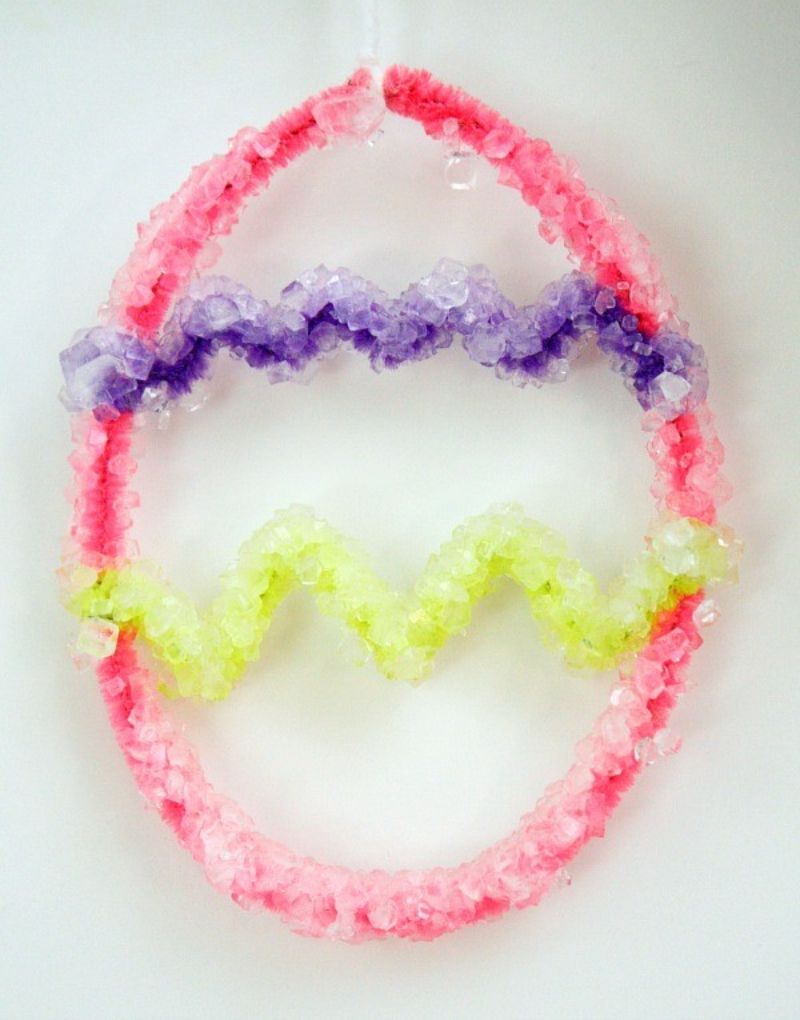
Observation
Set the container where it can be observed but won’t get bumped or disturbed. Stop back to check on the progress from time to time. The kids enjoyed seeing the progress throughout the day. We left our crystals for about 24 hours. As we slowly pulled the egg out of the water mixture the kids’ faces lit up with excitement.
The finished crystal Easter eggs are beautiful!
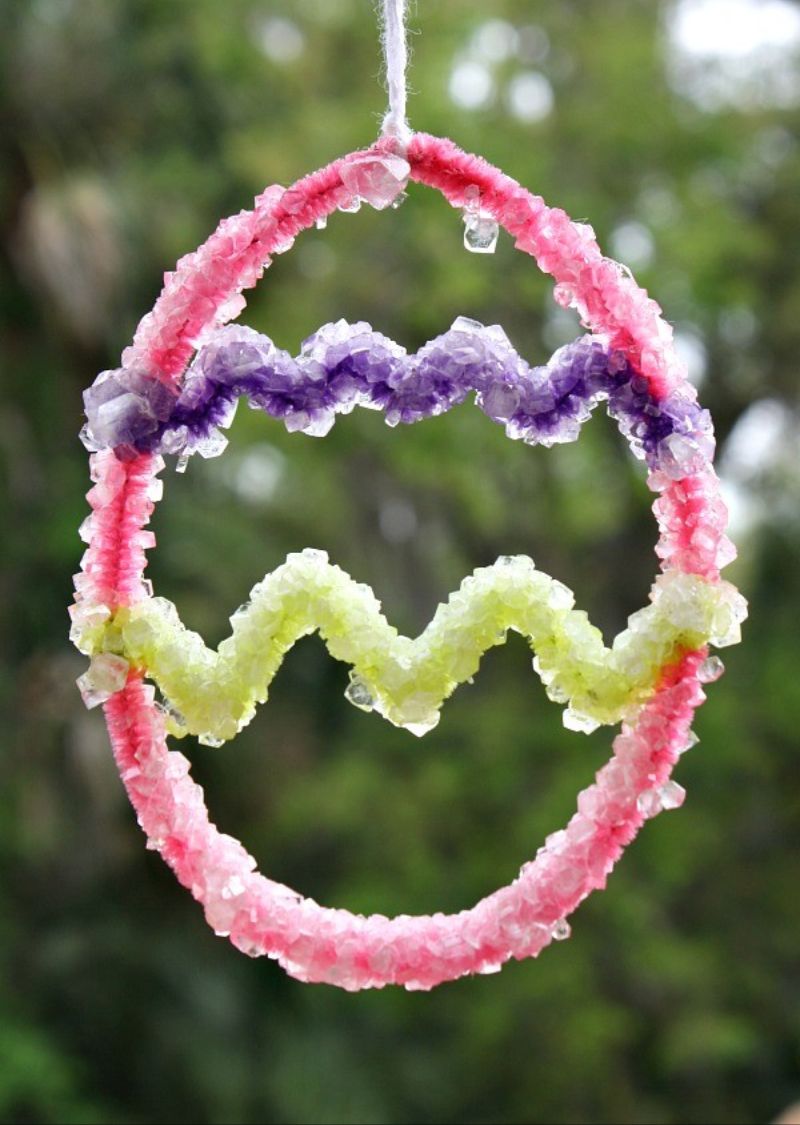
 .
.